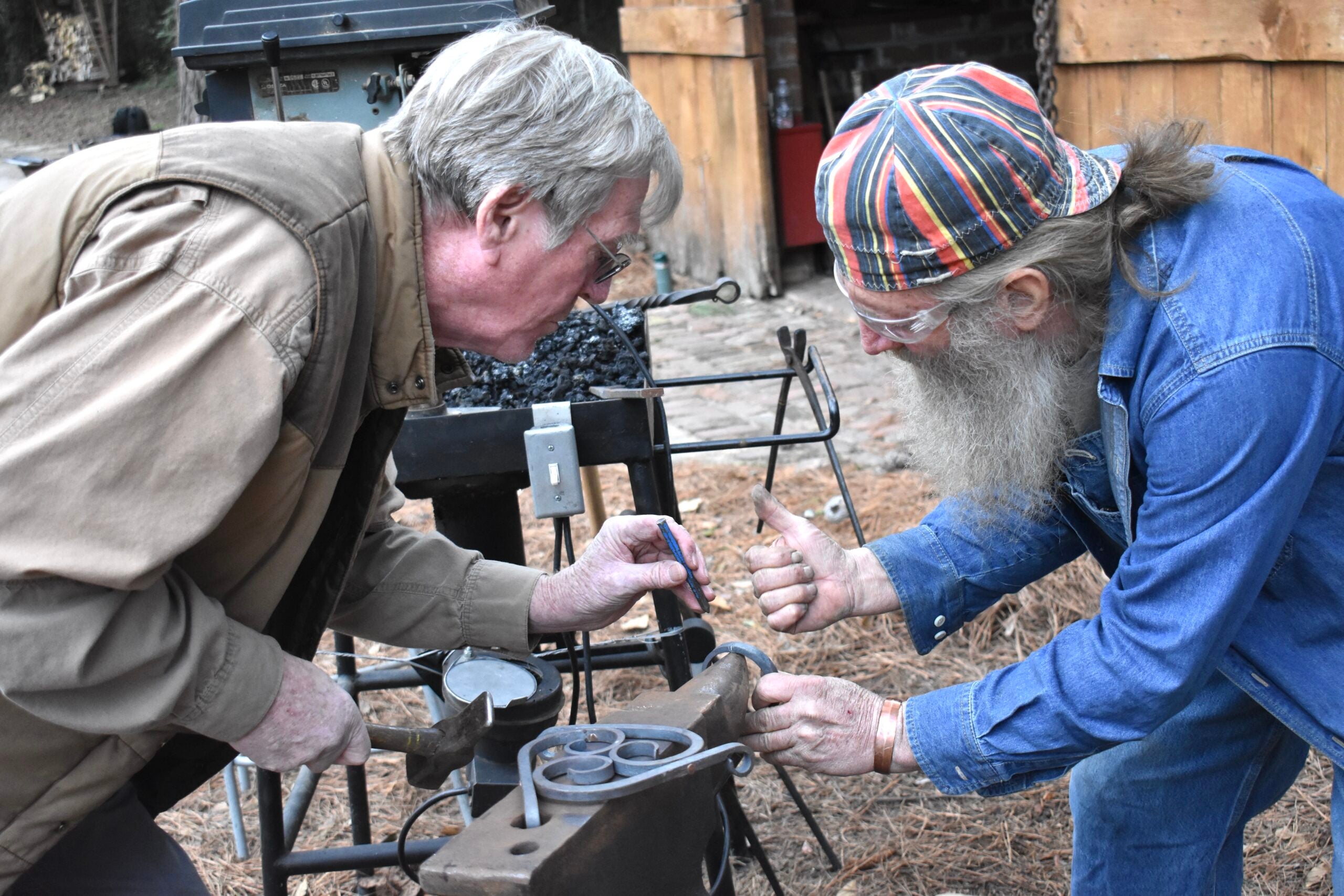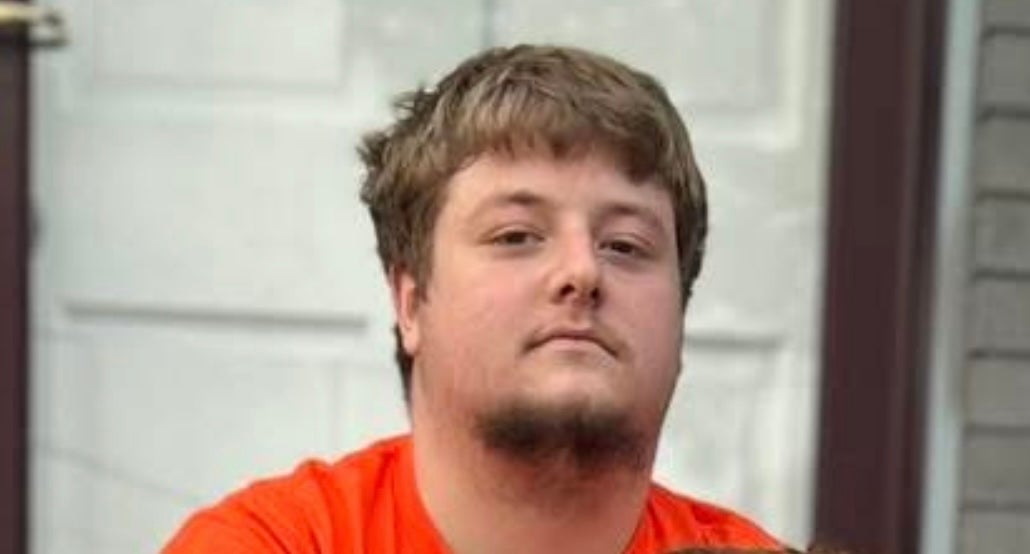Braving the cold, windy weather, on Saturday morning, Jan. 21, blacksmiths from South Carolina and Georgia gathered together at Living History Park for a hammer-in.
In between talking and laughing, participants separately worked on creating iron trivets to take home at the end of the day.
Most attendees were a part of the Philip Simmons Artist Blacksmith Guild, the official blacksmith group of South Carolina, which was named to honor the legacy of Philip Simmons.
Simmons, famous for his blacksmithing abilities, artwork and ornamental gates in Charleston, S.C., created the guild in 1994, and mentored others’ abilities until his passing in 2009.
By demonstrating at monthly meetings, charter members recalled old memories of how Simmons shaped their younger days of learning the trade.
Founding Charter member Barry Myers said he became interested in blacksmithing because of his interest in assembling guns.
“I was really interested in shotguns – especially learning to make the little parts of them – and I wanted to know if I could build one myself,” he said. “Well, I liked it so much I stuck with it and didn’t make another gun for 15 years.”
Conal and Nicole Smith said skills such as blacksmithing give people a healthy and creative outlet when they are home.
“My husband works at a federal prison, and there’s not a lot of reward in the job that he does, so having that creative outlet is really good for him,” said Nicole Smith. “And I think it’s an art that a lot of people don’t practice anymore, and so being able to take part in that tradition and pass it on to future generations is a pretty cool opportunity.”
Conal Smith said a family friend introduced him to the skill, and believed the uniqueness of it truly hooked him; according to him, blacksmithing was the foundation for the usage and invention of modern tools. His wife added that his love of fire, creativity and the act of hammering also contributed to the attraction.
“It’s not easy to do … I mean the blacksmith is the craftsman that made all the other craftsmens’ tools. So, it’s a base for everything that we have,” he said. “Without that, we wouldn’t have anything else that’s modern.”
Among the stoked fires and soot covered hands, both said small gatherings like hammer-ins encouraged socialization amongst a skill that can be predominantly isolated.
“I think being able to learn from each other, have some time to gather together and enjoy each other’s company – that is really good,” she said. “It’s been fun to watch him learn and grow … it’s cool to see all of that.”

With hundreds of members attending monthly meetings and classes all over the state and nation, such as Charleston, S.C. and Madison, Ga., guild members believe getting together allows each to learn something new and valuable.
Myers said the Philip Simmons Guild focuses on facilitating the training of other blacksmiths to create a community centered around encouragement and education.
“This is one of those things that I really, really wanted to do over the years. So I told myself, ‘You know what, I’m not getting any younger, and my body’s not getting any better – might as well start now while I can,’” said brand-new blacksmith David Young.
Young shared that he discovered his interest in joining the guild through several visits to the Living History Park, and the demonstrations of blacksmithing. Although daunting at first with 1500 degree furnaces and burning steel, Young said he felt welcomed into the community right from the start.
“These are a great group of guys. Everybody is willing to help out. Most guys are solo because they have forges in their backyard or garages, but when we get together it’s just like a family,” he said. “I totally encourage anybody that is interested to see if it’s for them.”
Young said his favorite part of learning the trade was how it allowed him to deal with stress through physically taxing motions.
“It’s just like any kind of art – you can make it as pretty or functional, sometimes both, as you want it,” he said. “Hammering just gets my frustrations out, and seeing the final piece form together is very satisfying.”
It’s camaraderie. We all have our differences, but when it comes to this there is no politics in iron. There is no hatred in iron, unless you burn your fingers,” said Young. “This brings people together. I don’t care what your nationality is. I don’t care what your color is or what your politics are – iron is iron. It brings everyone together.”
Youngest attending blacksmith Joe Kursch, a local 17-year-old who regularly participates with his family in events at Living History Park, said he loved the feeling of crafting steel and being able to manipulate it into something new.
“It kind of gives you bragging rights because not a lot of people do it,” he said. “I have a lot of fun … you never stop learning. There’s a satisfaction in being able to do it yourself. If technology ever fails, you can still do it because you have learned not to rely on machines entirely.”
As the flames and smoke persisted, with consistent hammering and drilling in the background, blacksmiths of various ages and walks of life could be seen laughing, and swapping stories about their beloved craft and recent projects.
For more information about the Philip Simmons Artist Blacksmith Guild, visit: https://www.philipsimmonsartistblacksmithguild.com












